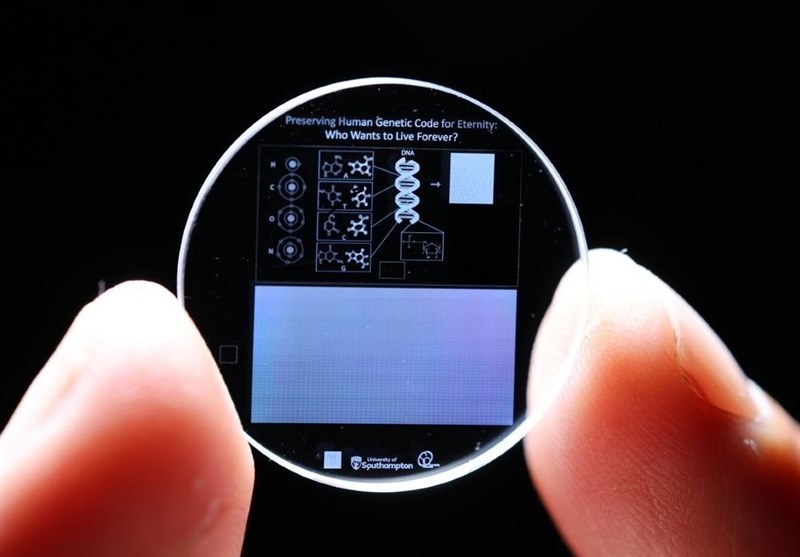Scientists Store Human Genome in Indestructible 5D Crystal for Future Revivals
TEHRAN (Tasnim) – Researchers from the University of Southampton have encoded the entire human genome in a near-indestructible "5D memory crystal," a groundbreaking technology that could potentially preserve humanity's genetic information for billions of years.
For the first time, scientists have successfully stored a copy of the human genome inside a "5D memory crystal," a novel data storage medium that could preserve this information indefinitely. The crystal, developed by a research team at the University of Southampton, is composed of a synthetic material designed to mimic fused quartz, one of the most stable substances ever discovered.
According to Guinness World Records, the crystal has held the title of the most durable data storage material since 2014. While most storage formats degrade over time, the 5D crystal is predicted to remain intact for up to 300 quintillion years at room temperature. Even under extreme conditions, such as temperatures up to 374 degrees Fahrenheit (190 degrees Celsius), the crystal could last for around 13.8 billion years, roughly the age of the universe.
The crystals can survive extreme temperatures, ranging from 1,800 degrees Fahrenheit (1,000 degrees Celsius) to well below freezing. They can also endure forces as great as 10 tons per square centimeter and resist cosmic radiation, making them viable for space travel, the researchers explained in a statement.
Data is transcribed onto the crystal using lasers that etch information into a five-dimensional matrix. The process involves millions of nanometer-wide nodes, each holding data in two optical dimensions and three spatial coordinates.
The technology was initially used in 2016 to store iconic texts, including the Magna Carta and the Universal Declaration of Human Rights. The largest of these crystals can hold up to 360 terabytes of data—5,000 times more than the average iPhone.
In this project, the researchers encoded the entire human genome, which consists of about 3 billion nucleotide letters representing the DNA bases: adenine (A), cytosine (C), guanine (G), and thymine (T). The crystal, containing this genetic blueprint, will be stored in the Memory of Mankind collection deep within the Hallstatt salt mine in Germany.
Lead researcher Peter Kazansky, professor of optoelectronics, noted that the crystal could serve as a time capsule, preserving the blueprint for humanity's potential revival by future advanced civilizations. "It could provide a blueprint to bring humanity back from extinction thousands, millions, or even billions of years into the future," the research team wrote.
While current technology cannot revive a species from a single genome, the team speculates that future advancements—whether from human descendants or alien civilizations—could achieve this. The crystal also contains diagrams of the DNA double-helix and elements essential to life, which the team hopes will guide future civilizations in understanding the crystal's purpose.
However, not all scientists are convinced. Thomas Heinis, a DNA storage expert from Imperial College London, expressed skepticism about the practicality of such a revival. "I can barely connect my 10-year-old iPod and listen to what I listened to back then," Heinis told CNN, suggesting future civilizations may not instinctively understand the crystal's function.
Despite the doubts, Kazansky emphasized the potential of this technology for preserving complex genomic data. "This opens up possibilities for building an everlasting repository of genomic information, from which complex organisms like plants and animals might be restored should future science allow," Kazansky said.
The future of the 5D memory crystal remains uncertain, but it offers a fascinating glimpse into humanity's efforts to preserve its legacy far beyond Earth's lifespan.
